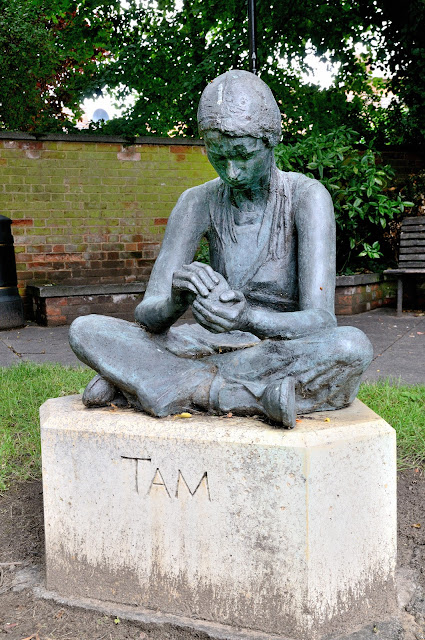St Mary-at-Elms, Ipswich

Following Ipswich`s Artethon trail in 2011, I came across No 4 in my list, which was TAM. Honoria Surie, the artist who made Tam, was born in Hertfordshire in 1944. She trained at Watford School of Art and is now a painter and potter. The bronze of Tam, the artist's daughter, is Surie's first work in the field of sculpture and is sited on a short plinth on the grass triangle between Black Horse Lane and St Mary Elms Church. The statue is made of bronze and has a calm and serene feel to it in keeping with its location Sculpture of a teenage girl sitting cross-legged in dungarees molding a ball of clay. Then, as if by magic, I found another piece of art nearby on the porch of the small church, St Mary Elms, popularly known by Ipswich people as simply the Elms. A return visit to the church had to the wait until 2019! The three small niches above the porch door of the Church, furnished with contemporary relief sculptures by Charles Gurrey in 2006. The...


